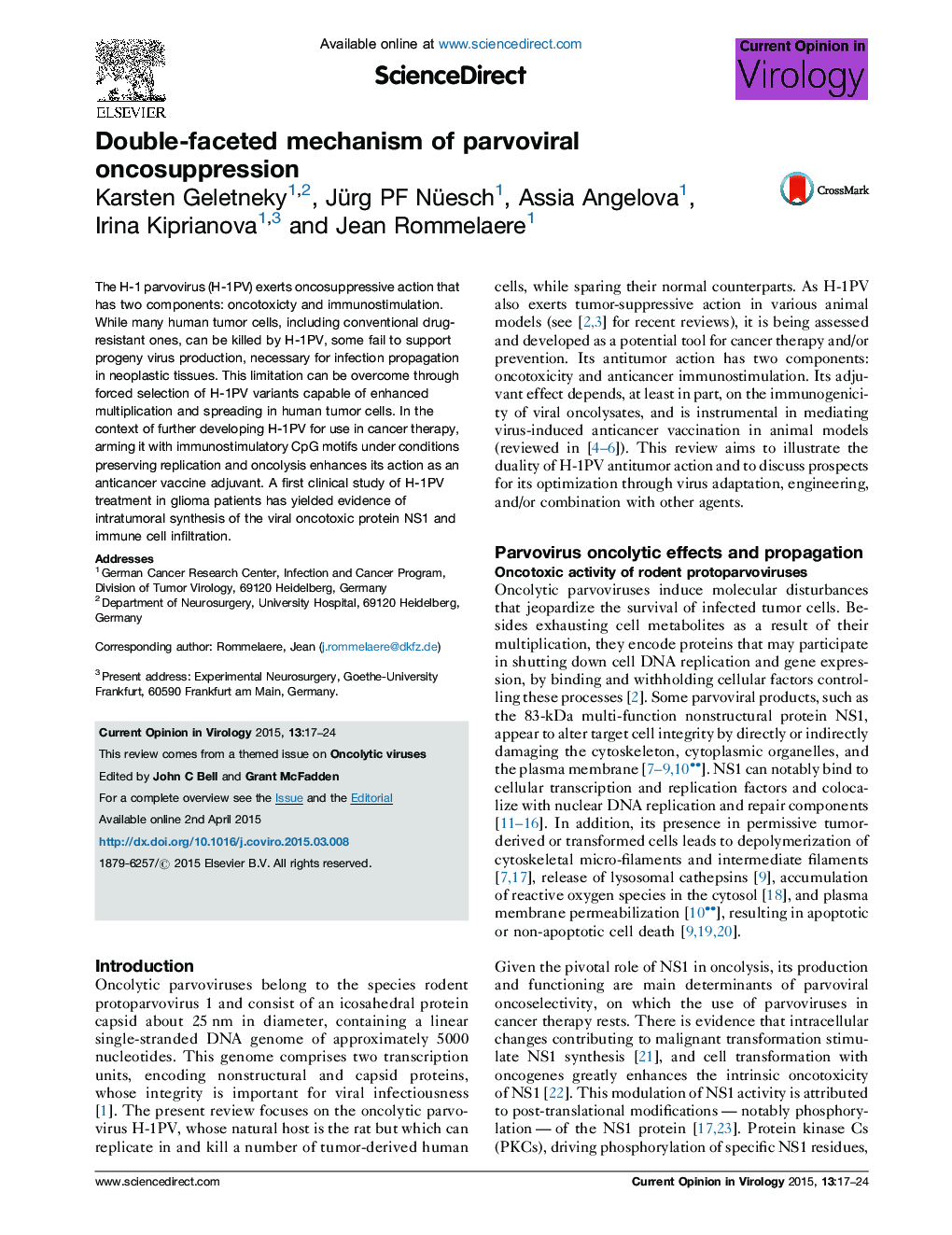| کد مقاله | کد نشریه | سال انتشار | مقاله انگلیسی | نسخه تمام متن |
|---|---|---|---|---|
| 2473277 | 1555913 | 2015 | 8 صفحه PDF | دانلود رایگان |
• H-1PV propagation in human glioma cells can be improved through forced selection.
• Arming of H-1PV vectors with immunostimulants enhances tumor vaccine effects.
• H-1PV cooperates (in)directly with immune cells in achieving tumor suppression.
• Post-translational modifications of the NS-1 protein regulate H-1PV oncolytic activity.
• Gliomas from H-1PV-treated patients contain viral NS1 proteins and immune infiltrates.
The H-1 parvovirus (H-1PV) exerts oncosuppressive action that has two components: oncotoxicty and immunostimulation. While many human tumor cells, including conventional drug-resistant ones, can be killed by H-1PV, some fail to support progeny virus production, necessary for infection propagation in neoplastic tissues. This limitation can be overcome through forced selection of H-1PV variants capable of enhanced multiplication and spreading in human tumor cells. In the context of further developing H-1PV for use in cancer therapy, arming it with immunostimulatory CpG motifs under conditions preserving replication and oncolysis enhances its action as an anticancer vaccine adjuvant. A first clinical study of H-1PV treatment in glioma patients has yielded evidence of intratumoral synthesis of the viral oncotoxic protein NS1 and immune cell infiltration.
Figure optionsDownload as PowerPoint slide
Journal: Current Opinion in Virology - Volume 13, August 2015, Pages 17–24
